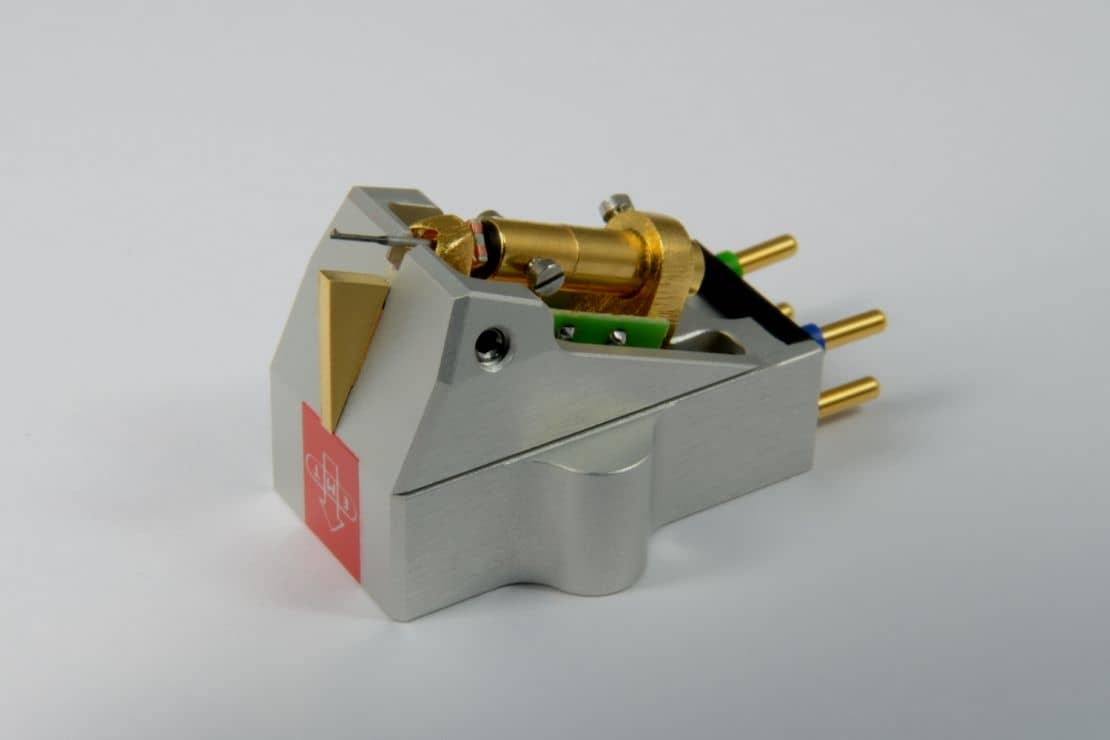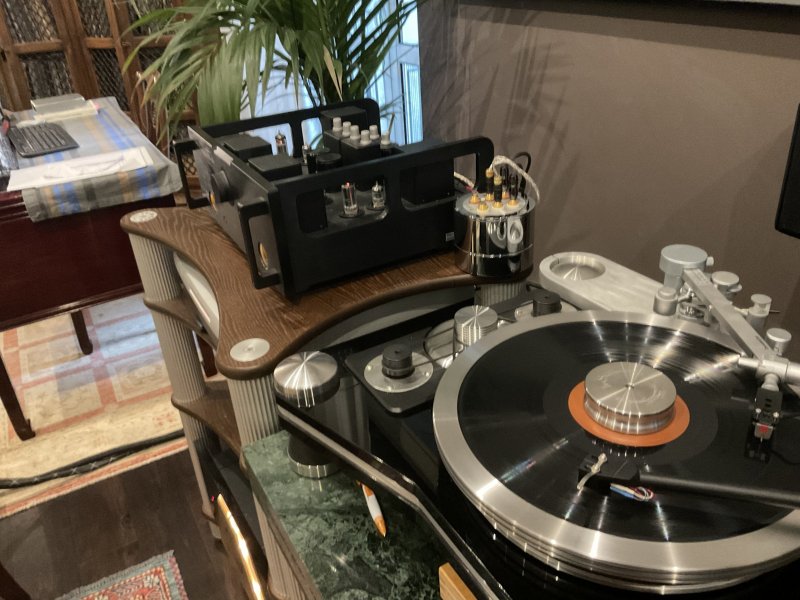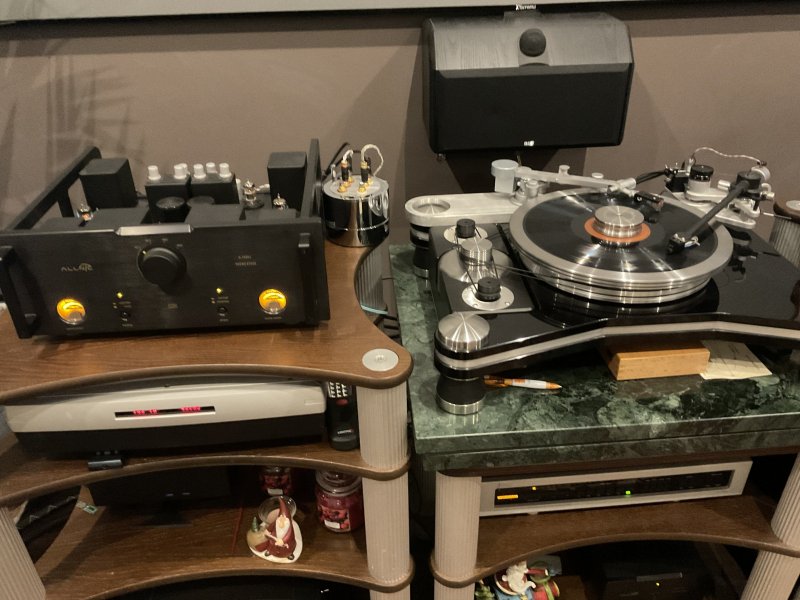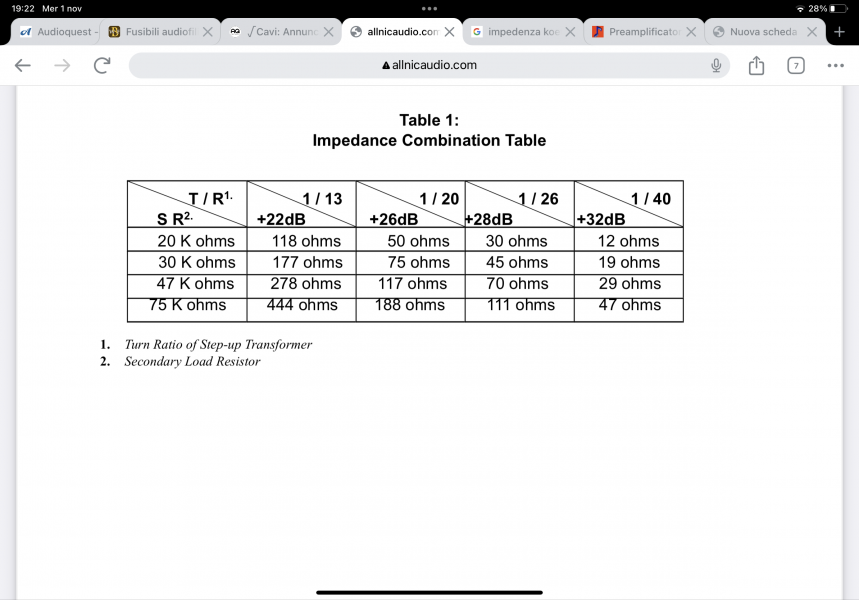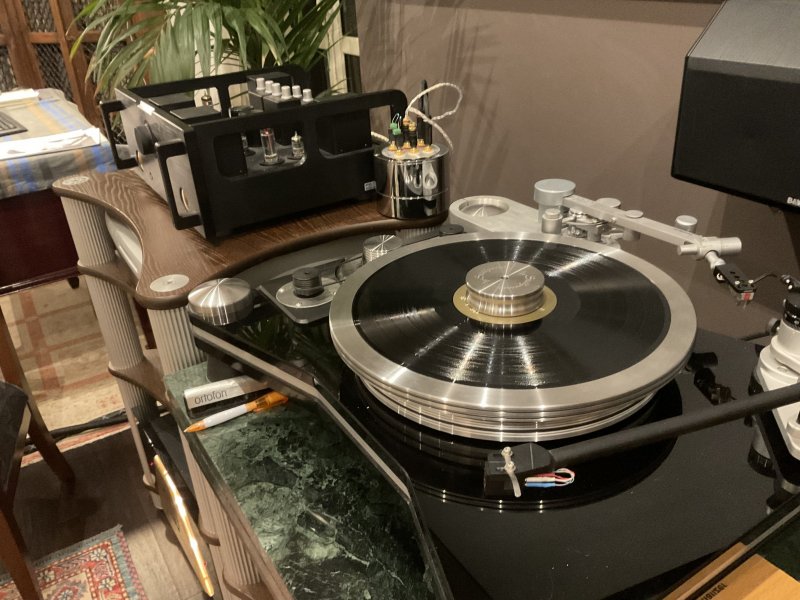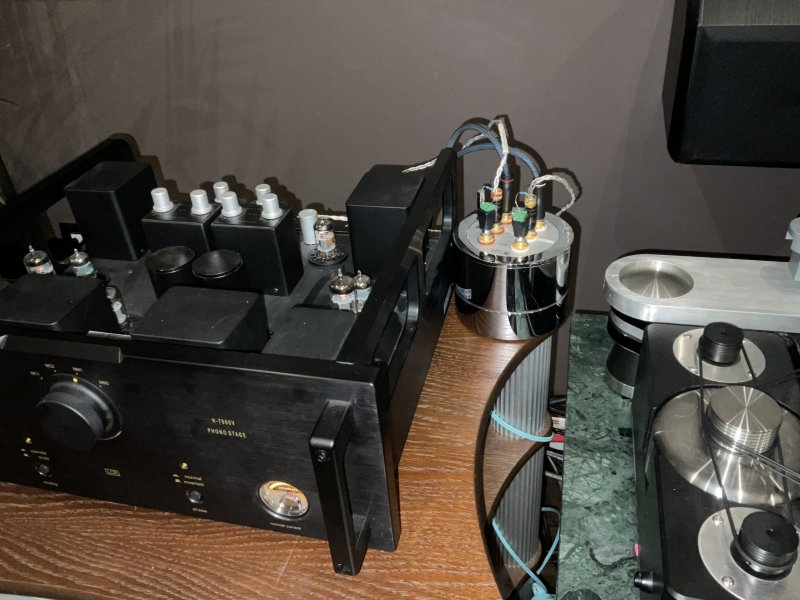dearest, last night with a couple of equally passionate friends we continued our listening until one in the morning. comparing the differences between the internal step up of the Allnic and the mc 10 of the Ypsilon always using the EMT and we all agreed on preferring the reproduction with the external step up for greater warmth in the medium-low frequency and a sensation of greater relaxation, Attention small differences while the allnic alone was preferred for greater brightness without ever becoming aggressive, testimony to the great quality of this device with which you can truly manage any cartridge (maybe not the Ortofon mc 2000). the arrival of the late hour forced us to lower the volume, despite ourselves, but it also allowed us to appreciate the enormous quality of this EMT head, which even at minimum volumes continued to give us a whole series of colors that warm you up your heart and fill you with incredible emotions. The voices reproduced as well as the large orchestras left you speechless as we accompanied our listening with a half bottle of Hapden Pagos. the records used ranged from a beautiful collection by Diana Krall, to a magnificent Quintessence by Billy Evans, continuing with Chet Baker in Chet, up to Duets with Carmen Mc Rae and Betty Carter. To tell the truth, if in Quitessence Ray Brown's double bass was preferable on the Allnic step ups, making the vibrato of the strings more evident, the low notes of Evans' piano acquired a bit more weight with the Ypsilon. In Duets the play of the voices of the two artists with the solo pre had a greater sparkle but with the Ypsilon you could savor and touch the air and smoke of a jazz club of the 60s. For the symphony we alternated the violin concert by Brahms with Szeryng and Antal Dorati in the original Mercury Sr 90308 to Stravinsky's Fire Bird with director Oiji Oue in the Rreference Recording edition and finally a splendid RCA victor lsc 2394 with Haydn's 94 surprise symphony. Here our previous impressions of a substantial balance but with a preference for the Ypsilon step up were all confirmed with the exception of the Fire Bird where the timpani and bass drum hits were reproduced by Allnic alone like real shotgun blasts and came at you making you jump like someone had slapped you. We all had a greater preference in no uncertain terms with Brahms where Mercury's beautiful but pungent recording was probably rendered with a little more sweetness. the settings chosen for this session were to have the cartridge read a scale. This morning early I prepared a series of RCA connectors with a series of N resistors to make the Ortofon A 95 read a surge that varied between 25 and 70 ohms I mounted the head on the Dynavector 507 and went to prepare a good coffee while waiting for my two friends to arrive. When they arrived I had already rolled a couple of LPs on the turntable. the first hour was spent choosing the most suitable load to interface it with the step up, while as regards the allnic in the past months I had determined that the best position was with the internal step with the ratio of 1/26 and having it read a impedance of 30 or 45 ohms. unfortunately we immediately realized that in this case the Ypsilon Mc 10 could not keep up with the comparison in terms of signal to noise ratio also due to my trusty MBL speakers and their sensitivity which stands between 81/82 db. One of the things that caught my eye and ears, however, is that the timbre that this gives to the music is truly remarkable. as long as we limited ourselves to voices and the reproduction of a few instruments, the sound that this Step up gave us was absolutely delightful, probably by using Ypsilon mc 20 step ups we would be able to maintain the exceptional timbre but also be overwhelmed and involved by the large orchestra where the MC 10 showed that it did not have the strength to adequately push the Ortofon A 95. in this case the allnic h 7000 showed off a personality and an incredible ability to drive this cartridge, giving the reproduction an exciting three-dimensionality and speed.







